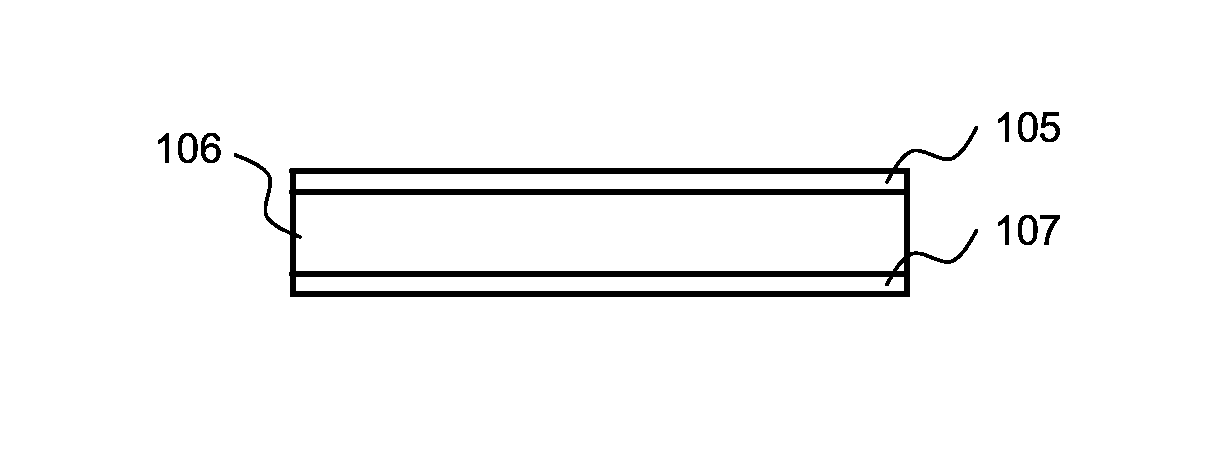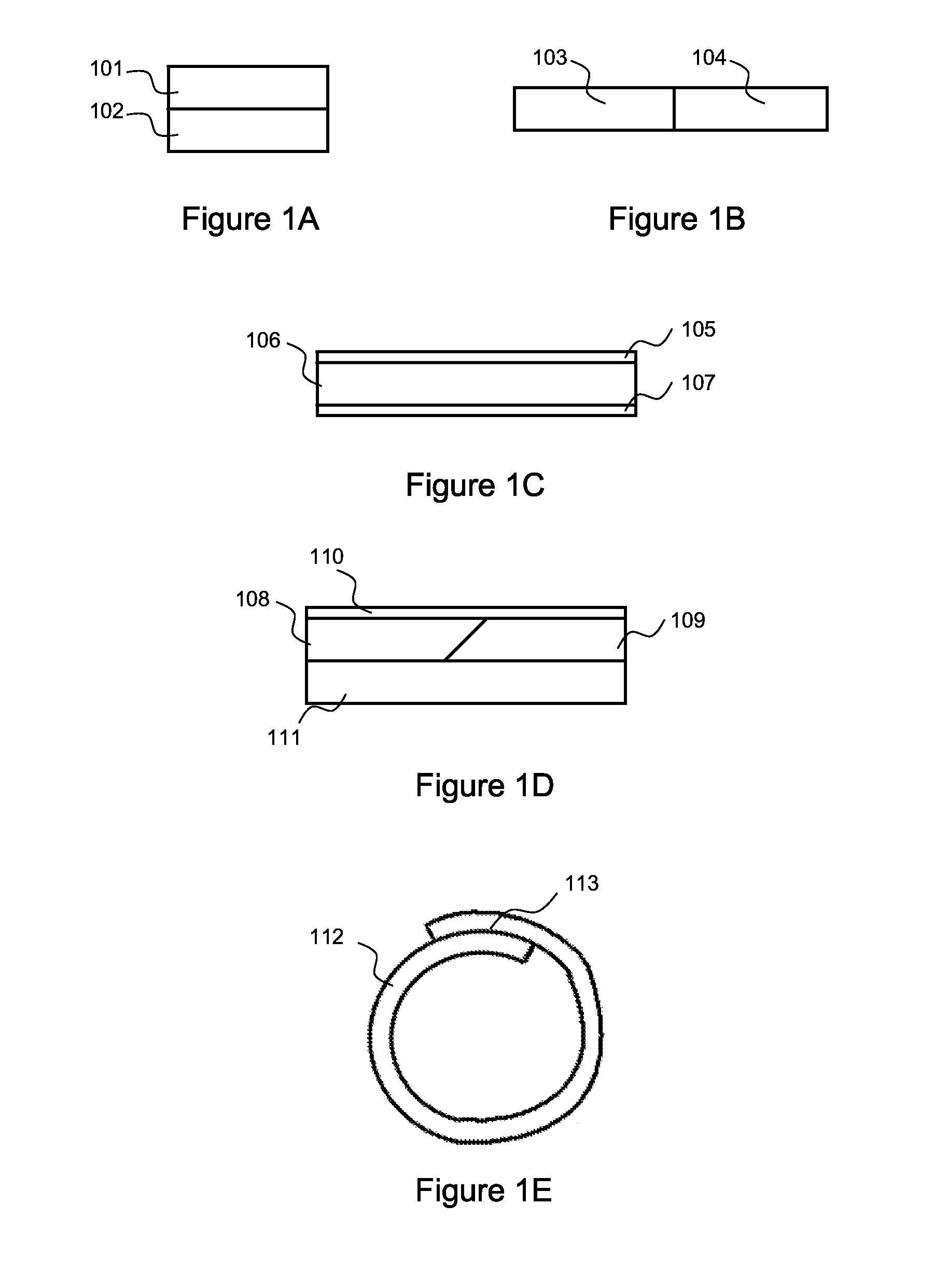Fibrous Substrates Adhered with Substituted Cellulose Ester Adhesives and Methods Relating Thereto
a technology of cellulose ester and fibrous substrate, which is applied in the field of fibrous substrates adhered with substituted cellulose ester adhesives and methods relating thereto, can solve the problems of asthma attacks, polyurethane-based adhesives, and release of formaldehyde into the surrounding environment, and achieves less than satisfactory adhesive properties
- Summary
- Abstract
- Description
- Claims
- Application Information
AI Technical Summary
Benefits of technology
Problems solved by technology
Method used
Image
Examples
example 1
[0056]Three substituted cellulose esters and two cellulose esters were produced and analyzed. Cellulose was treated with acetic acid and then mixed with a cooled solution of acetic acid, acetic anhydride, and sulfuric acid. The temperature of the resultant mixture was increased and allowed to react for about 20 minutes. At this point, cellulose ester compositions were hydrolyzed. To produce substituted cellulose esters, the mixture was hydrolyzed in the presence of additional sulfuric acid. Table 1 below provides the conditions for the production of the five samples.
TABLE 1Acetyl ValueSulfurSO4Temp(% as aceticContentContentTime(° C.)acid)(ppm)(ppm)CA-1673.039.03105314CA-24.575.040.15160481SCA-1665.041.438072419SCA-24.570.038.02268805SCA-34.568.539.084291286
[0057]This example is thought to demonstrate that substituted cellulose esters (specifically, substituted cellulose acetates) can be produced with high sulfur contents at relatively low temperatures and short hydrolysis times that...
example 2
[0058]Several adhesive compositions (Adhesives 1-5) having varied solvents and substituted cellulose acetate compositions were tested for their adhesive properties in a variety of wood laminates. Further, two wood laminates were produced and analyzed with commercially available ELMER'S GLUE ALL® (a poly(vinyl acetate)-based adhesive, available from Elmer's Products, Inc.). Table 2 provides the wood laminate compositions, and Table 3 provides the results of Lap Shear tests conducted using INSTRON® (Model 3366) as a measure of the adhesive properties of the various adhesive compositions.
[0059]Upon visual inspection, the substituted cellulose acetate adhesives of this example were optically clear and had a high gloss, which may be desirable in some commercial applications.
[0060]To form the laminates, two small wooden blocks or two cardboard pieces were glued together using a 10% aqueous solution of the Adhesives 1-5 (Table 2) or ELMER'S GLUE ALL® (as noted) and allowed to dry. The resu...
example 3
[0062]Various additives were added to three adhesive compositions that comprise substituted cellulose acetate according to at least some embodiments described herein. The resulting compositions were tested for their adhesive properties on wood substrates (¼″ pine strips 1.5″ in width) using INSTRON® (Model 3366) Lap Shear test. Summaries of the results are shown below in Tables 4 and Table 5.
[0063]Adhesive 6 comprises substituted cellulose acetate having about 620 mg / kg of sulfur. To the Adhesive 6, varying amounts of ammonium zirconium carbonate were added. Table 4 provides the results of the Lap Shear test for the various compositions.
TABLE 4% Zr by wt of totalAverageAveragesolution (% Zr by wtBreakBreakStnd.of solids)(kgf)*(psi)**Dev. 0 (0)179263320.04% (0.2%)2713981100.08% (0.4%)280411350.16% (0.9%)300441710.32% (1.8%)36253245*average of 6 replicates**lap shear of 1.5″× 1″ adhered area
[0064]Adhesives 7 and 8 comprise substituted cellulose acetates having about 520 mg / kg of sulfu...
PUM
| Property | Measurement | Unit |
|---|---|---|
| Fraction | aaaaa | aaaaa |
| Fraction | aaaaa | aaaaa |
| Fraction | aaaaa | aaaaa |
Abstract
Description
Claims
Application Information
 Login to View More
Login to View More - R&D
- Intellectual Property
- Life Sciences
- Materials
- Tech Scout
- Unparalleled Data Quality
- Higher Quality Content
- 60% Fewer Hallucinations
Browse by: Latest US Patents, China's latest patents, Technical Efficacy Thesaurus, Application Domain, Technology Topic, Popular Technical Reports.
© 2025 PatSnap. All rights reserved.Legal|Privacy policy|Modern Slavery Act Transparency Statement|Sitemap|About US| Contact US: help@patsnap.com



